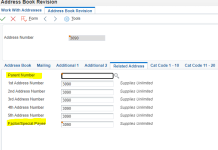MicheleDG
Member
Dear all,
as per Q&A document 755938.1 of the Oracle Support, the Supplier Master (P04012) cannot be managed by line of business or company (unlike the Customer Master).
This is a strong limitation as there are many distinctive elements such as different payment terms, methods, default currency, etc. that generate the necessity to proliferate codes in both AB (Address Book) and AP (Accounts Payable) for the same vendor entity.
Our business is asking for a solution to somehow consolidate these AP records perceived as redundant, especially during the record registration process and for reporting.
Has someone ever dealt with this type of request?
How did you manage it? Any advice?
Thank you all in advance.
Michele
as per Q&A document 755938.1 of the Oracle Support, the Supplier Master (P04012) cannot be managed by line of business or company (unlike the Customer Master).
This is a strong limitation as there are many distinctive elements such as different payment terms, methods, default currency, etc. that generate the necessity to proliferate codes in both AB (Address Book) and AP (Accounts Payable) for the same vendor entity.
Our business is asking for a solution to somehow consolidate these AP records perceived as redundant, especially during the record registration process and for reporting.
Has someone ever dealt with this type of request?
How did you manage it? Any advice?
Thank you all in advance.
Michele

